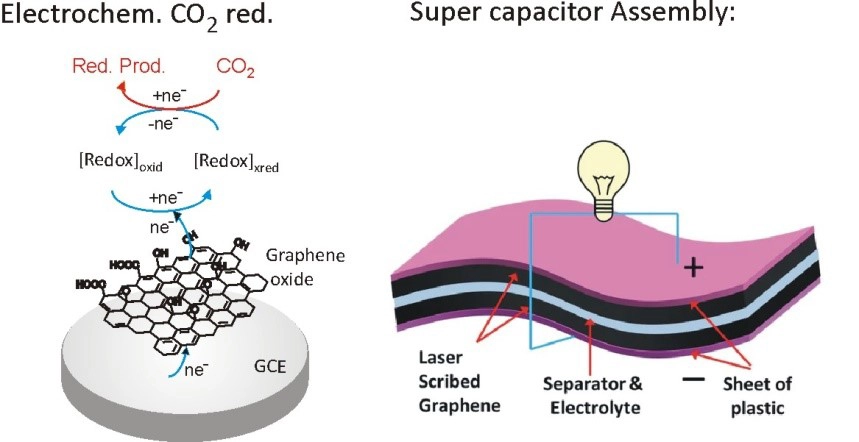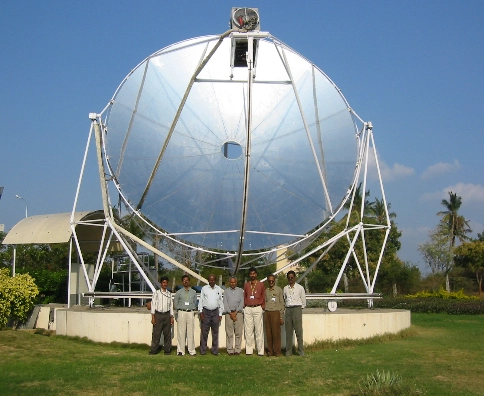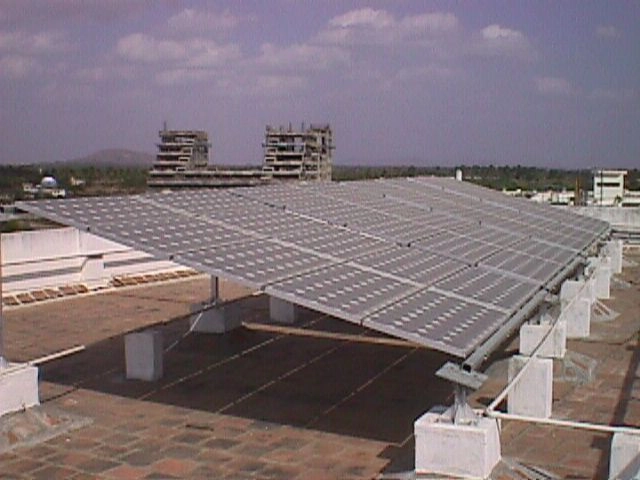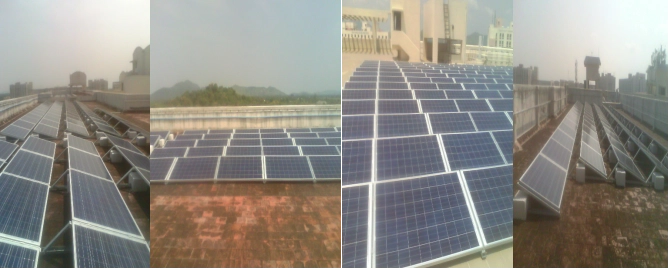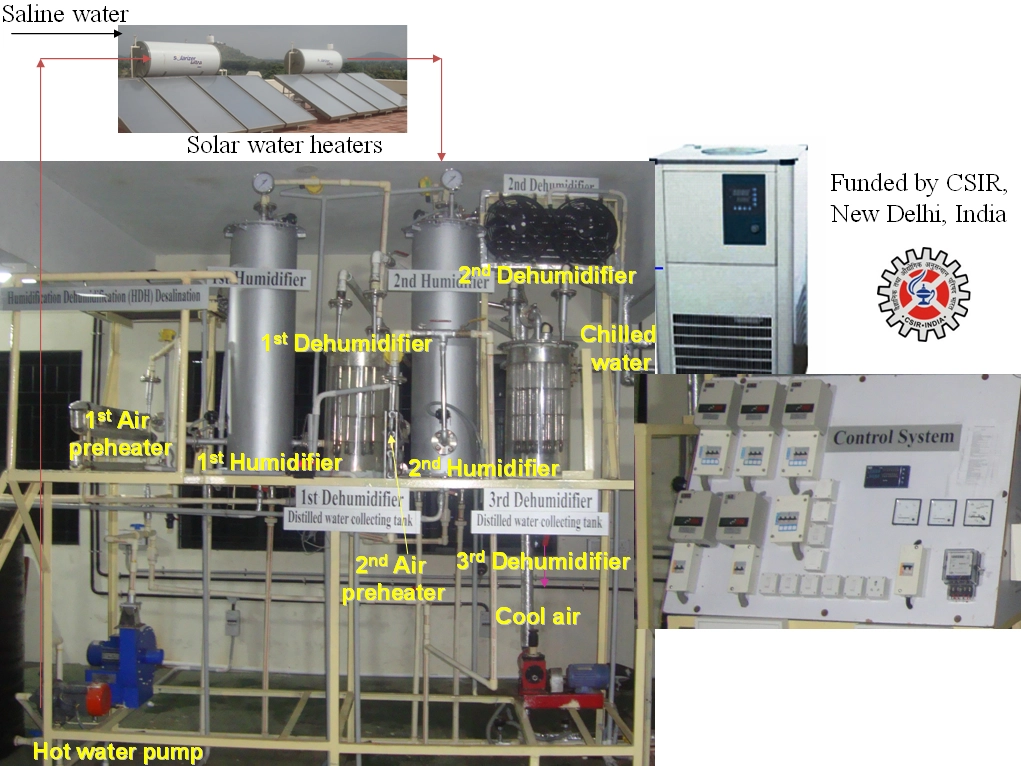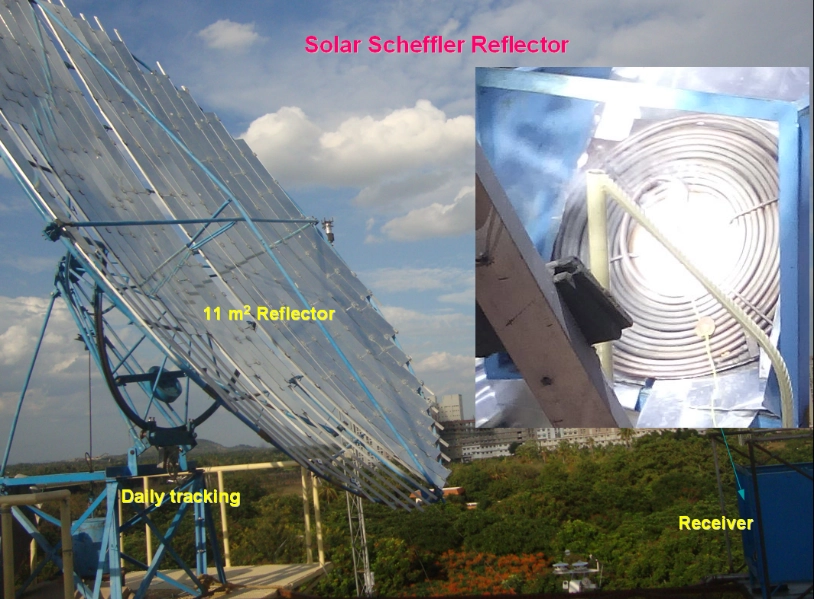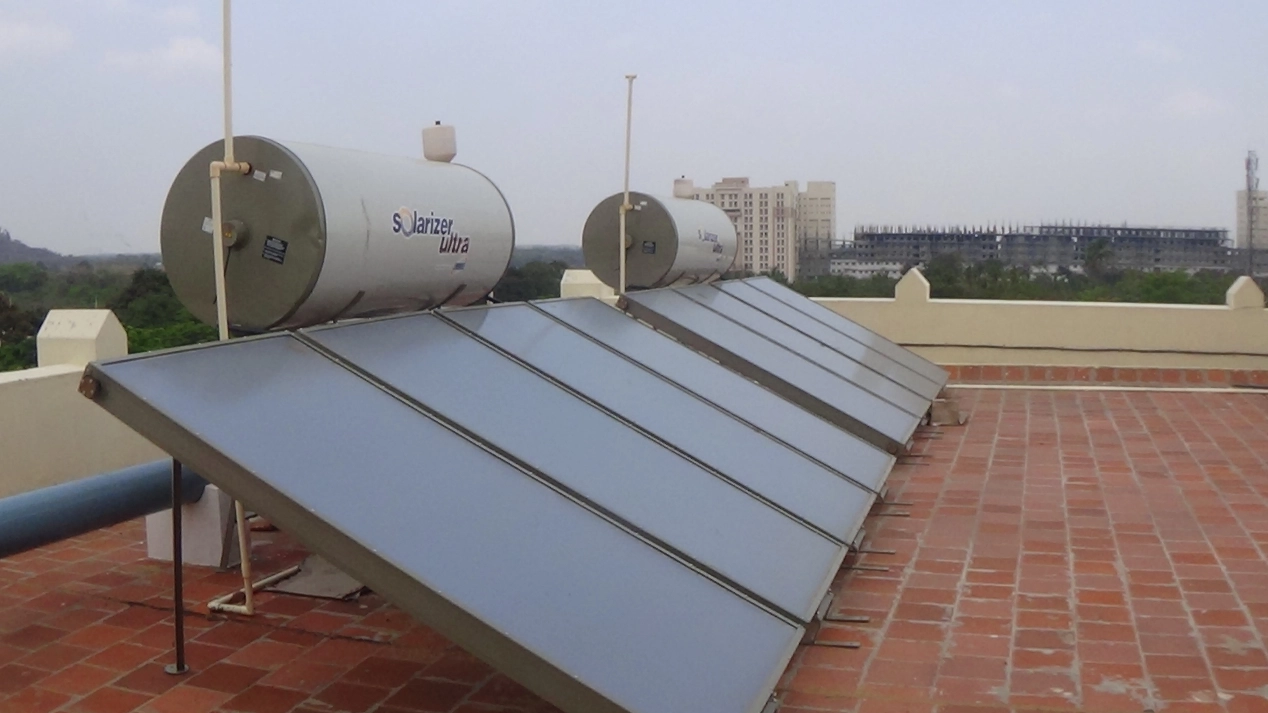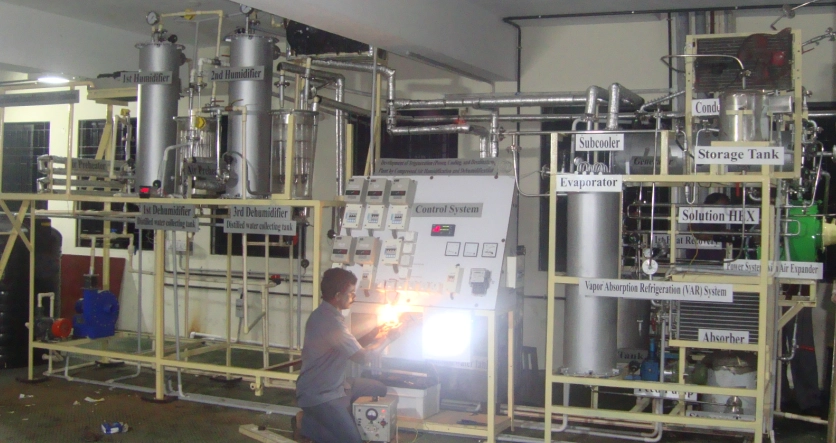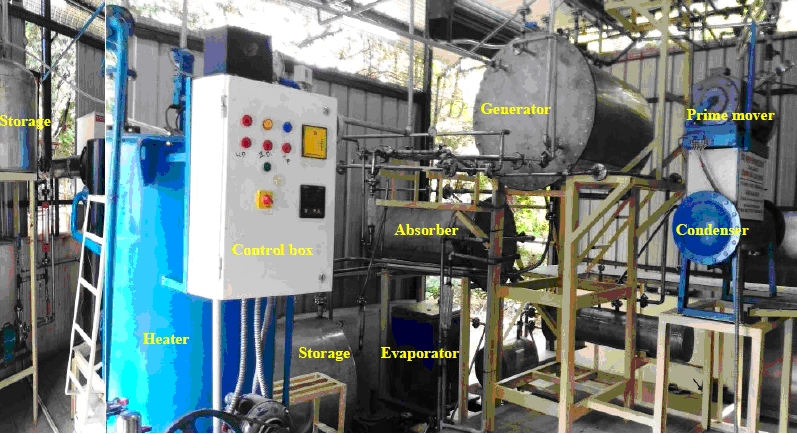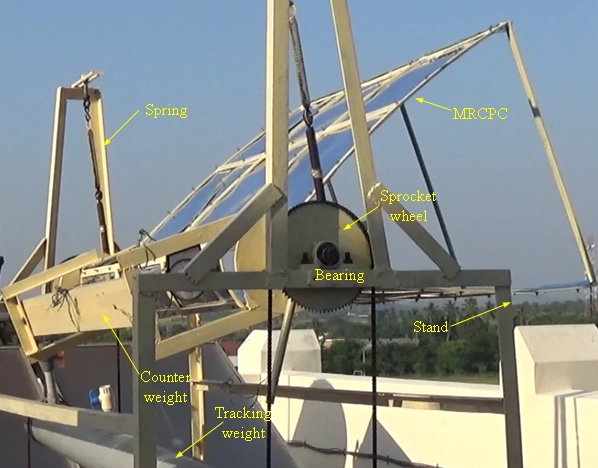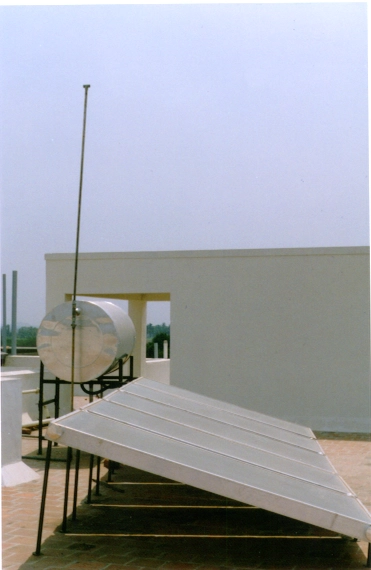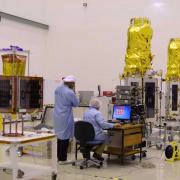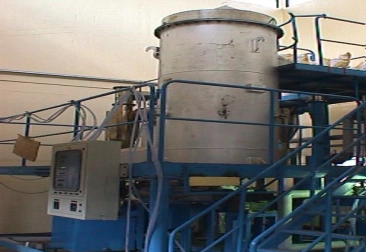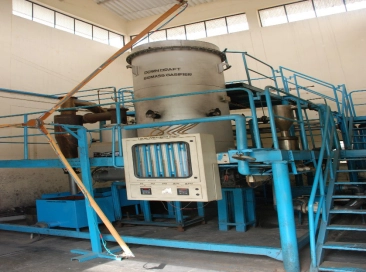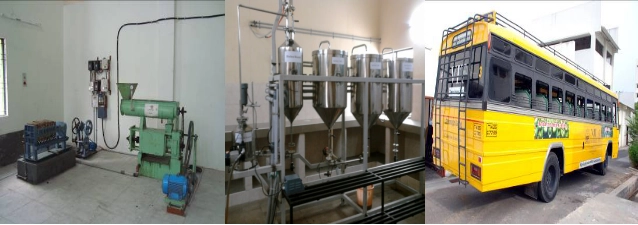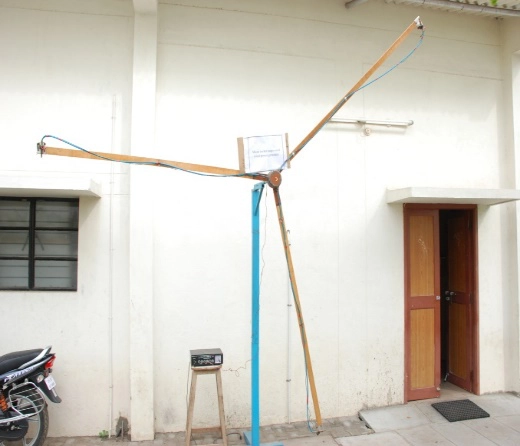CO2 Research and Green Technologies Centre
Electrochemical Reduction
Electrochemical Reduction of CO2 and Energy Materials: Electrochemical Reduction of CO2 and Energy Materials: In recent times, electrochemical methods have gained substantial attention in environmental and energy technology related areas. The electrochemical reduction of carbon dioxide in useful products like methanol, syngas (H2+CO), methane, formaldehyde etc and development of energy storage systems like super-capacitors are of particular interest. Our centre has been working on the development of bio-inspired electro-catalytic (chemically modified electrode) systems, in which the redox active molecule immobilizes the carbon nanomatrix, to achieve CO2 reduction the and development of super-capacitor materials based on low cost carbon and pseudo-redox couple based composite systems. Our primary aim is the preparation, characterization and technological applications of these systems.
Solar Energy
10 kWe Solar Dish Stirling Engine
A 10 kW Solar Dish Stirling Engine Power Plant has been installed in VIT at a cost of Rs. 80.0 Lakhs. MNEs have supported this project by providing a grant of Rs 37.50 Lakhs, and additional expenses are being met by funds provided by VIT. Of the various types of solar energy generation systems developed to date, the solar dish Stirling system is acknowledged to be the most efficient technology for converting solar radiation into electrical energy. In this method, the concentrator is parabolic in shape and reflects incident solar radiation on to a focal point. A heat exchanger mounted at the focus absorbs the solar radiation and transfers this energy as heat to the working gas in a Stirling engine. A generator converts the mechanical energy delivered by the Stirling engine into usable electric power. The engine uses helium or hydrogen as working gas at a temperature of 650 to 800C. The Stirling Engine and the Concentrator Unit has been imported from Germany. The turn-table & support structure has been fabricated locally. The controls, electronics systems and Data Acquisition Software are being integrated to produce electric power for use in Institute Campus. This system has been fully commissioned in August 2002.
Solar PV Plant with 8.25 kWe Capacity
Solar PV plant at CO2 RGTC
In the year 2003, solar panels for power output of 8.25 kW were installed on the roof top of the institute’s main building. These ensure an alternate source of power to all computers, peripherals and servers so that these devices can be operated continuously without any interruption in the computer centres. The total cost of Rs. 50.0 Lakhs towards these panels was borne by Vellore Institute of Technology. The Solar PV unit was shifted to CO2 Research and Green Technologies centre in 2010. The power being produced by the solar PV unit is used by the centre and for the functioning street lights near the Men’s hostel. Two types of high efficiency mono-crystalline Solar Photovoltaic panels have been installed. In addition, computer interfacing has been enabled to continuously monitor the performance of Solar PV power plant and to record the production and utilisation of power.
Solar PV Plant with 500 kWe Capacity
In 2015, A 500 kW roof top based Solar PV module has been successfully installed by Tata power system pvt.ltd in VIT University. The two academic buildings and rooftops of three men’s hostel buildings were used to install the unit. The system produces approximately 2200 units per day. Observation suggests that the capital investment for Solar PV will be taken back within 4-5 years of time.
Integrated Humidification-Dehumidification (HDH) Desalination and Cooling
Hot and arid areas need more portable water and air conditioning. Similarly, solar thermal intensity is greater at these locations, especially during the summer. Hence the proposed plant is powered by a solar source to match the demand and supply. Solar thermal energy can be used for thermal desalination and air conditioning. Humidification-dehumidification (HDH) desalination is a simple and cost effective solution to convert the saline water into desalinated water. In the proposed idea, the desalination yield has been augmented with two levels HDH desalination integrated with a cooling plant. Dr. Tangellapalli Srinivas, Principal Investigator and Professor, CO2 Research and Green Technologies Centre, School of Mechanical Engineering, VIT University, Vellore a received project grant (Grant No. 22(0627)/13/EMR-II dated 26.02.2013) from Council of Scientific and Industrial Research (CSIR), New Delhi, India for development and demonstration of the proposed plant at VIT University, Vellore.
Dr.R.Natarajan is the co-investigator in this project. Prof. C. Chiranjeevi, Asst. Professor (Sr.) was awarded his Ph.D. for conducting research on this pilot plant erected at VIT University, Vellore. In two-stage desalination, the use of chilled water in the final dehumidifier favours the desalination output. To justify the merit of humidification-dehumidification (HDH) desalination with added cooling, the total yield (desalination + cooling) in dehumidification with normal water and chilled water are compared. Chilled water circulation in the last stage of two stage plant has been recommended after the comparative analysis.
Trigenertion Plant
The aforementioned desalination and cooling plant has been extended to a trigeneration plant by adding a power generation element. The tri-generation plant has high energy conversion efficiency with triple benefits from a single source. The sequence in the operations is air compression, heating of air with solar concentrating collector, expansion, heat recovery, first stage humidification and dehumidification and air conditioning. Solar operated vapor absorption refrigerator (VAR) and solar water heater (SWH) are selected for air cooling and heating humidification respectively. The role of turbine inlet temperature (TIT), compressor pressure ratio, humidifier efficiency, humidifier effectiveness, hot water temperature and distilled water temperature (by varying VAR evaporator temperature are idenfified as key process conditions to optimize the trigeneration outcomes.
Kalina Power Plant
A pilot scale Kalina power plant has been developed at the research centre with SERB funding. The work is focused on experimental study through the examination of the effect of the separator temperature which influences the source inlet temperature at a fixed degree of superheat and terminal temperature difference, strong solution concentration, turbine concentration and solar direct beam radiation on performance of the system to maximize the yield of power and efficiency.
Solar Passive Tracking
A novel gravity based passive solar tracking mechanis; suitable to a linear solar concentrating collector has been conceptualized, developed, simulated, analyzed and tested experimentally. An attempt has been made to minimize the tracking load and error by controlling the dripping rate or filling rate of liquid in the gravity system. The identified key influencing design parameters in the proposed mechanism are sprocket wheel radius, spring stiffness and tracking radius. Large sprocket wheel, low stiff spring and small tracking radius minimizes the tracking loads. The recommended sprocket wheel radius and tracking wheel radius are 125 mm and 60 mm respectively. The simulation studies are validated with the experimental results. The practically obtained collector’s incidence angle is compared with the minimum required (theoretical) incidence and found a satisfactory match. The improvement in thermal efficiency of the collector with the proposed tracking mechanism has been highlighted by comparing the efficiency of intermittent tracking collector.
Solar Water Heating System at VIT Hostels
CO2 Utilization
CO2 Research centre has developed an engine that runs on carbon dioxide gas. This engine is hybridized with a diesel engine and is being assembled in a vehicle for demonstration and technology developmental studies. The successful demonstration will help in the mitigation of CO2 towards reducing its adverse effects on global temperatures and climatic changes.
CO2 is one of the important supercritical absorption solvents suggested for extraction of essential oils and concentrates. The equipment developed in this laboratory is used for extraction of vegetable oil from oil seeds and the absorption of CO2 in hydro carbon fuels to improve the combustion efficiency. All the pressure parameters and temperature parameters can be varied depending upon the systems requirement. The unit has also been provided with a data acquisition system for better research potential.
Biomass
As early as in 2002, VIT installed a biomass based power plant with a capacity of 90 kW using the biomass available in and around Vellore District. Each day nearly 1.8 metric tons of Juliflora wood is being used for the production of approximately 1500 units of power. This power is supplied to four hostels in the institution. VIT is now set to share the rich experience with the government for installing decentralized power plants next to each substation using the surplus agro biomass and to train the rural youth in the operation and maintenance of the biomass power plant.
Salient Features
- Feed Stock: 135 kg/h of biomass having around 50% moisture content and Calorific value of 14.65 MJ. Minimum Calorific value of gas 4.5 MJ/kg
- The producer gas generated in the gasifier can be used as dual fuel in the conventional DG set for power generation or for thermal application directly
- Engine: Kirloskar Engine having a rating of 76 BHP.
- Typical gas composition:
- 20±1%; CH4: 3±1%; H2:20±1%; CO2:12±1% and rest N2
In order to improve the availability of the biomass, VIT has cultivated Albezia and Subbabul in dry land area and has demonstrated the feasibility of producing approximately 15 metric tons of wood biomass per acre. The leaf of the Subbabul is very good fodder for cattle, particularly for milking cows. Approximately 7.5 metric tons of fodder is produced per acre. This success is demonstrated to the local farmers and they are being encouraged to cultivate Subbabul with assurance that the biomass would be purchased. This will help marginal farmers earn more than Rs.20000 per acre compare as compared to their present earning of Rs. 7,500 per acre.
Pyrolysis Technology
A pebble bed pyroliser followed by catalytic pyrolysis/reforming unit with low temperature and chilled water condenser and gas holder has been developed and is used for the pyrolysis of waste tyres and plastics and agro bio mass. The process parameters are optimized for maximizing the required product by pyrolysing organic Pyrolysis Reactors waste. Studies are being carried out on waste tyre, HDP bags and thermacol. Oil produced from vegetable waste is heated to a high temperature and pressure and allowed to expand inside a large reactor for thermal cracking of larger molecules in order to produce low molecular hydro carbons and olefins.
For the moving bed and fixed bed pyrolyser, it may be necessary to use hard cakes or briquetts for pyrolysis to avoid caking. In case power dry material like saw dust or rice husk or to be pyrolysis one has to use circulating fluidized bed gasifier. DST has funded this project on the equipment is already fabricated. Studies will be carried out to optimize the conditions in order to maximize hydrogen and CO production using different bio mass materials.
Rice straw is being used as raw material to produce bio oil from the Auger reactor and the circulating fluidized bed rector by using fast pyrolysis method. This project has been funded by MNRE.
Biogas
We have installed a 300 m3 Biogas plant using the sludge from the waste water treatment plant. The plant is under operation since December 2012 and has been funded by MNRE. The 40 kVA biogas engine is being run by using the gas from the biogas plant and the evacuated power is supplied to the waste water treatment plant. Additionally 15 kVA producer gas engine is installed in the plant for the purpose of research.
Bio Fuel
Process selection and optimization for the production of oil from sterculia oil seed and from bottle palm oil seeds is in progress, along with R&D for the production of biodiesel using these oils. A bus operated with 30% bio diesel is being evaluated for fuel efficiency, exhaust gas composition, engine wear and tear, and lubricant performance. The bus has covered more than 60,000 kms in the last two years without any breakdown R & D in Oil extraction and biodiesel production using different vegetable oil seeds. Conversion of a bus to run on Hydrogen, Biodiesel and Diesel combination.
Production of BE-A fuel by fermentation of Agro waste
Butanol is expected to replace ethyl alcohol as renewable fuel as it has got number of favorable properties as fuel compared to ethanol. After the introduction of hydro carbon fuels butanols are being produced from hydro carbon. Since Iso-butanol has a number of uses in the chemical industry as feed stock and solvent, most of the early work on the use of butanol was based on iso butanol. However, the interest in butanol as fuel has revived.
In 2007-08 British Petrolium(BP) commited five hundred million pounds for the production of butanol from bio source and to study the performance of butanol in IC engines. The major advantage of using N-butanol as fuel is that it can be produced from the same raw materials used for ethanol and also using the same process equipments. At VIT, we have initiated work to produce bio-butanol from different natural organic sources and waste products. We have initiated the studies with clostridium acetobutylicum using starch as raw material. Butanol blends of 10 to 50% were studied in two stroke engine for the specific fuel consumption and exhaust gas composition. Optimum composition is evaluated based on the engine performance and exhaust gas composition. Studies are also carried out on the use of blends with diesel in CI engine.
Wind Energy
Wind power generators can be augmented with micro thrusters. A theoretical study has been carried out for the concept’s technical feasibility. A private entrepreneur has shown interest in adopting this technique in their wind mill. However it is necessary to obtain partial funding from R & D funding agencies. An Indian patent has been filed for this technology. The mathematical modeling of a new technique for the hybridization of Horizontal and Vertical blade design using spiral wind mill has been proposed to the Ministry of New and Renewable Energy (MNRE). The Micro thruster augmented wind mill project was sanctioned by the MNRE and is being implemented at Kayathar, Tirunelveli Dist collobration with NIWE facilities. The synthesis of wind using waste heat in the high temperature flue/exhaust gas vented out through chimney produces power and synthetic marble.
Hydrogen Energy
- Absorption and desorption characteristics of different alkali metals and alloys for the production of metal hydrides by varying the hydrogen pressure and absorption temperature (absorption and desorption Iso terms).
- Hydrogen storage and dispensing characteristics of metal hydrides using metal hydride water system.
- Process optimization for encapsulating metal hydrides with thin plastics films.
- Storage and Dispensing of Hydrogen using metal hydride –water system.
The process and equipment for these are patented both in India and USA. Patent No: 240904



